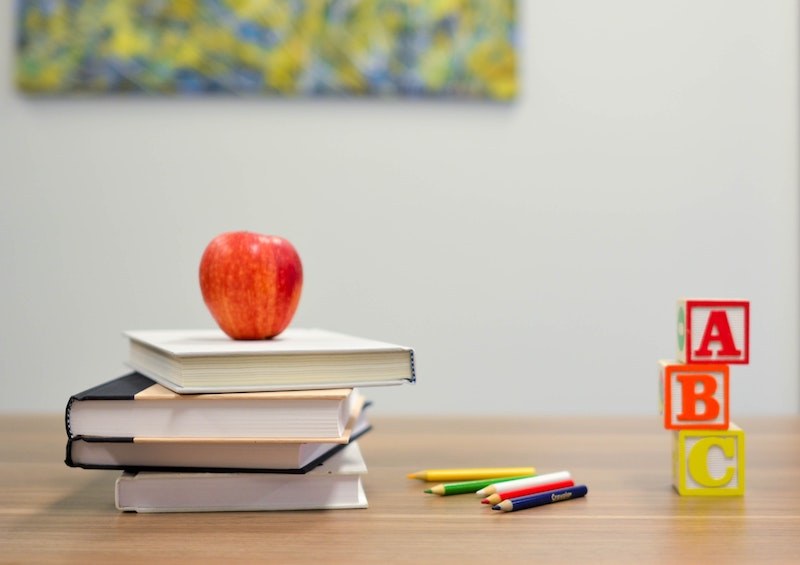It’s been an academic year defined by wearing masks and performing precautionary tasks, during which the need for sanitizer was eventually upstaged by the arrival of COVID-19 vaccines. It’s also been a period of time when “roomies” became “Zoomies,” as Newark Teachers Union President John M. Abeigon was fond of saying.
With summer break in full view, teachers and staff from the Perth Amboy, Newark, Garfield and North Bergen school districts look back at the challenges they faced during 2020-21.
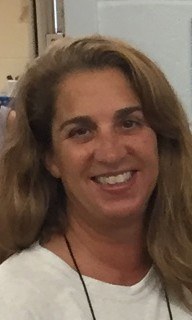
Maria Hornlein / Member of the Perth Amboy Federation (Local 857)
and a teacher at the Robert N. Wilentz Elementary School
During the 2020-21 school year, Hornlein put her two decades of experience to good use, serving as a jack of all trades due to staff shortages.
“I began this year as a maternity coverage for first grade, then as a building sub for all grades, and now as a long-term kindergarten sub for a medical leave. At this time, I am unsure what my position will be next year. I truly hope my district sees the need to place back the interventionists and specialists into their old positions. If there were ever a need for these experienced faculty members, and this department of specialists as a whole, next year is the year, for sure.”
Hornlein says her view of remote learning is “torn,” but she admits it was the correct choice for her district “given the science and guidance at the time.”
“As this school year began, I certainly felt more prepared for remote teaching thanks to the end of last school year. I was able to hone my computer skills using products and other resources like Nearpod and Seesaw, which were introduced by the district to enhance the student experience. Depending on both teacher and student comfort levels with each platform, teachers chose what worked best for them and their students. … I found it most challenging when I moved to kindergarten in February of this school year. I sometimes found myself forgetting that some of these students have never spent a day in a school setting. If they hadn’t attended any type of PreK program, virtual learning was all they knew. I was also amazed at the level of technological proficiency these little 5- and 6-year-olds were able to master.”
When her school switched to a hybrid option on April 26, Hornlein says teachers “had a whole new learning curve to tackle.”
“We had to prepare mentally and physically for the new norm with social distancing, masking, temperature checks, etc., which were in place going back in person. It was very different and very intimidating at first, but both students and staff adjusted. I need to give a huge shoutout to educators at this point, because everyone was forced to go above and beyond this school year, and I think that while it has helped us grow both personally and professionally, it has taken a toll on many.
“To be honest, it was bit nerve-wracking at first to be back in person. The fear of the unknown was palpable by staff and students alike, but really after the first or second week, everyone seemed to settle in. Again, we didn’t have huge numbers coming back in person, so I think that the students who were in person were happy to have some sense of normalcy in seeing their teachers and friends and being in the school environment. Others that stayed remote seemed content to finish out the last two months with the familiarity they were accustomed to all year. While teaching concurrently is no small feat, it was nice to have some students back in the classroom and be able to provide some support that some of them were lacking at home.”
On what Hornlein has planned for students on June 25, the last day of school:
“[We are] doing a virtual end-of-the-year award ceremony for our kindergarteners, to mimic what we would have done in a normal school year. Parents will be invited to attend virtually as well. We are also having an informal meet-up at the local park after school hours to hand out some end-of-the-year gifts as we would in a normal year. These kids deserve it!”
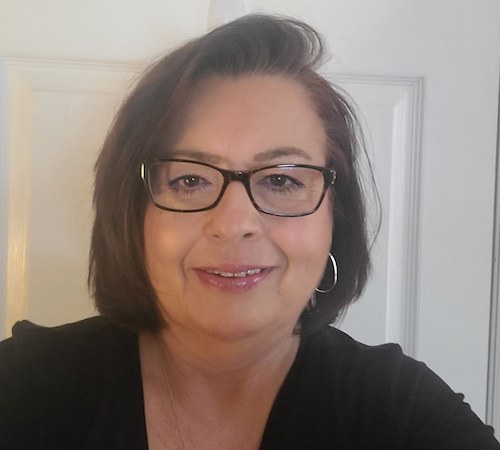
Judy Amorosa / Member of the Perth Amboy Federation (Local 857)
and a nurse at Perth Amboy High School in the personalized learning program
As Perth Amboy teachers and students navigated remote learning, Amorosa transitioned to remote nursing, which she says involved “lots and lots of Zoom meetings” and watching COVID-related webinars.
“I was allowed to go into my office, even though there were no students in the building, from September until December. Beginning in December is when the superintendent said, ‘OK, nobody in the building.’ I was only allowed in the building with special permission once every two weeks if I had to do something that I could absolutely not do at home. But at home, I would do the registrations and call the students … I was also monitoring anybody who complained that they felt sick, calling them to suggest they go to the doctor. I’ve been keeping track of anybody who may or definitely does have COVID or any other illnesses.
“I’ve been trying to hook the parents up with different resources to help them if the family is quarantined with COVID. I had one family who even though had a high schooler also had a 1-year-old baby in the house, so they couldn’t get diapers, so I called around and I found [free] diapers and dropped them off on their porch.”
The pandemic led to more professional collaboration between Amorosa and her fellow Perth Amboy nurses.
“The good thing is us nurses in the Perth Amboy district, we really get along well. … All of us have shared different news [COVID-related] articles and webinars so we’re all on the same page, and of course we worked together with our supervisor on getting some protocols in place.”
After Perth Amboy High School started a hybrid schedule on April 26, Amorosa settled into a good groove.
“I’ve not had any students since we opened up with complaints of possible COVID systems. I have been able to start my light screenings for hearing, vision, height, weight and blood pressure now that I have some students in school. … It’s good to finally see the students, but really, I’m still kind of doing the same work. I did have to set up an isolation room, which thank God I have not had to use once.”
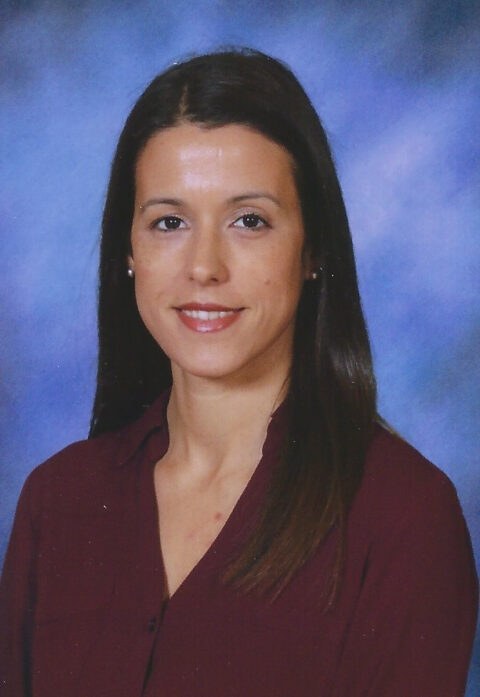
Silvia Pereira / Member of the Newark Teachers Union (Local 481),
ESL teacher at South Street School in Newark and an AFTNJ vice president (PreK to 12)
In July 2020, Pereira launched the Distance Educational Program, a series of workshops for educators in her district on how to use various online-teaching platforms for remote learning. Her support continued long after the final workshop, held Aug. 6.
“I created a Google Classroom that provided training videos, slides and resources that teachers could always come back to whenever they needed a refresher or to quickly access materials in the areas they needed help with. Throughout the [2020-21] school year, I made myself available to all teachers. Oftentimes a simple email would suffice, but if anyone needed that one-to-one support, we would hop on a Webex and work out the issue together.
“[Recently] one of my colleagues told me, ‘Every time I have to use technology, I think of you.’ It’s heartwarming to know that I was able to provide support to teachers. This was not a normal teaching year, and I am glad I was able to make it that less stressful by letting them know that I would be there to support them along the way.”
During the fall and winter months, Pereira logged onto a Webex by 8:25 a.m. to begin her day of teaching.
“I taught ESL one period to seventh graders and one period to eighth graders. The other periods in my schedule were used to provide support to seventh- and eighth-grade students in science and ELA. Due to the fact that we were virtual, I often found myself having a hard time disconnecting from the computer. More often than not, I was providing feedback on student work. I felt like this was my only way of helping students understand their mistakes whenever they were not with me.
“I always wanted to do more. I felt like maybe I wasn’t doing enough. I felt bad for my students. It was hard enough that they were living through a pandemic. Students often long for that classroom connection, so as an educator, I strived to provide them with the best that I could give them, even if it was through a computer screen.”
Two dates from the past two school years will be “truly hard to erase from my memory,” Pereira says.
“March 13, 2020, was the very last day that I set foot in the classroom. Who would have ever thought that we would be living through a pandemic and that our life would come to a halt? It was a very difficult time. Just like every teacher out there, my mind was full of questions and fears. Somehow, we made it work and teachers all over made sure that they provided their students with the very best considering the situation.
“When I was first told we might be returning to school, again I was left with an uneasy feeling and wondered if it was really safe to return. I was truly worried about how this was all going to work out. However, when I heard that our return date would be April 12, 2021, I thought to myself, ‘It’s time! This is our road back to some normalcy. We need to get back. Our place is in the classroom with the children.’ As I set foot in the building for the very first time, I was filled with mixed emotions. Even though I was worried, I felt happy to be back. I was finally going to be in the classroom and see students face to face. Returning to the classroom was what we needed. It was different, but it was great. The district had put together a great reopening plan, which included a safe and conducive learning environment for all of the students and staff.”
Pereira plans to “take some time to disconnect from the computer” during the summer break and catch up on some reading.
“Mental health is such an important aspect of life, and I feel like it is often neglected. … To be honest, it is hard to think about September, but I have full confidence that the district will continue to put in place all the necessary measures to ensure the safety and well-being of everyone that walks into the building.”
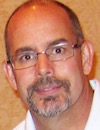
Robert Barbier / Member of the Garfield Federation of Teachers (Local 3977),
English teacher at Garfield High School and AFTNJ executive vice president (PreK to 12)
When school began in the fall, Barbier says he found himself in a unique position.
“I team teach, and ordinarily my partner helped me with the technology. But she was staying home on maternity leave when we returned, so I was on my own with a much higher expectation from my district. The last months of the previous year were very hectic because we were all learning on the fly, but there was now a greater expectation for us to use online learning platforms more effectively.”
Even though Barbier and his colleagues were teaching at-home students from school buildings, he says contact between staff was “strongly discouraged.”
“I did not really see many people except for arrival and dismissal. There was a lot more contact with students in the virtual classroom as compared to last year, but it was not the same. After about a month, all staff was sent home to teach virtually. I started to get into routines with my students where I showed them my dog, talked about breakfast — toast was high on my list — and did a daily weather forecast to end class.”
Teachers in the Garfield school district returned to buildings March 1, followed by students a week later. Barbier received a COVID-19 vaccine soon after the reopening, “so that gave me an additional level of comfort in the building.” He’s looking forward this fall “to once again seeing my students and being able to interact with on more levels.”
“I want to hear them laugh and engage in the chatter that used to drive me crazy. In addition to my teaching duties I also help coordinate the Response to Intervention program in the high school. As a result of the pandemic we have really expanded our interventions. I look forward to continuing in this area moving forward and helping students as they navigate through their lives.”
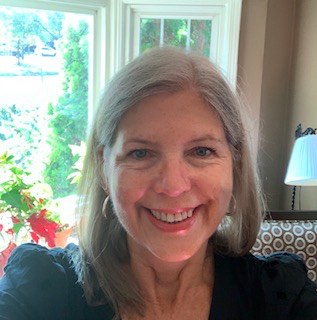
Carol Toomey / President of the North Bergen Federation of Teachers (Local 1060) and a ninth-grade teacher of remedial reading and writing at North Bergen High School
Despite having a few months of remote teaching under her belt, Toomey had not warmed up to it by the time the 2020-21 academic year began.
“Like all teachers, I read about remote teaching and learning, I talked with colleagues who knew more about the topic than I did and I tried things, which sometimes failed. There isn’t anything that I like about remote teaching. I miss the interaction with the kids. I miss their expressions — whether they are showing me they are confused and I need to reteach something or the finally got something and they know it.”
From September through early November, Toomey was among the teachers who were in her district’s school buildings.
“You would come into school in the morning and go directly to your classroom. You didn’t interact with your colleagues. You had lunch alone. Many teachers were on accommodations, so the building felt empty. One afternoon in October, the principal made an announcement to leave the building immediately as someone tested positive for COVID-19. It felt like the beginning of a dystopian novel. Would I get sick? Was I already sick? Was this the beginning of the end?”
As a member of the District Restart Committee, Toomey was immersed in the planning for in-person education, which resumed in North Bergen on April 26 using a hybrid model.
“The day the students returned was joyous! There was life in the building again! The kids were great. Hudson County has been affected by COVID in a dramatic way. I commend the students for following all the safety protocols without hesitation.”
The last day of school in North Bergen is June 25, and Toomey has a poetry lesson planned “as a way to encourage students to continue to read and write over the summer.”
“I am hoping that we are totally in-person in September. My goal is to help students develop relationships within the classroom with their peers.”

